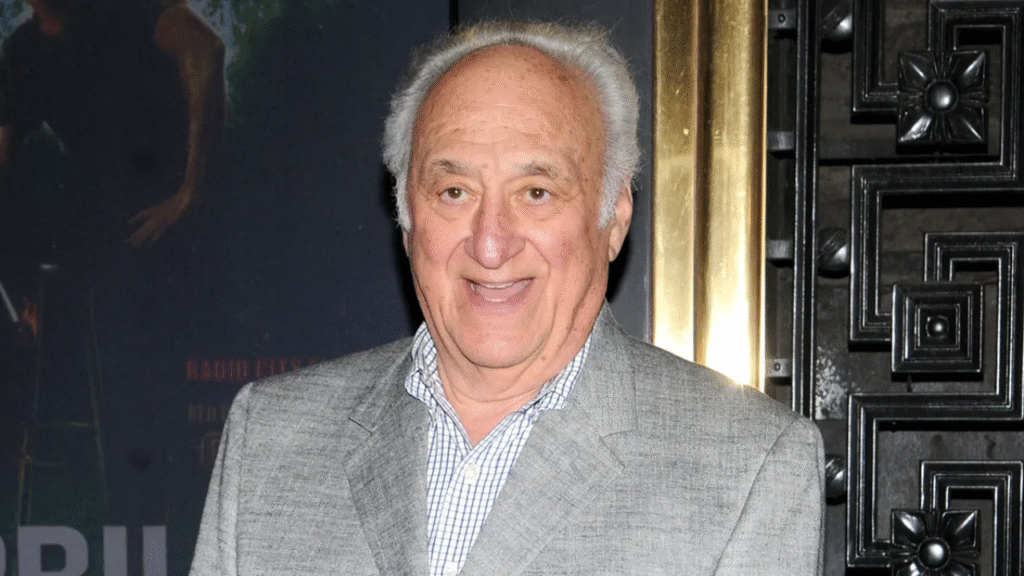When people came to know about Jerry Adler for the first time, many were surprised to learn that Broadway giants had become a late-blooming screen star for a long time. From paragraphs long ago, it is clear that Jerry represents a rare mixture of dramatic mastery and memorable television appearance behind Adler. For the audience across the United States, their travel is deeply echoed—not only because of their achievements, but also due to authenticity and dedication behind them, especially when they started their on-screen career in the 60s.
Early Year: Moved Towards the Theater Roots
Born in 1929 in Brooklyn, Jerry Adler grew up in the world of theater. His father, Philip Adler, was the general manager of the influential group theater, and acting was practically in his blood—his cousin included acting coach Stalle Adler and actor Luther Adler. As a result, he naturally turned to theater, began his career in 1951 as a stage manager. For decades, he worked on more than fifty Broadway productions—which included classics like Mary Fair Lady, Annie, and The Apple Tree.
A Late Emergence in On-Screen Acting
Interestingly, Jerry Adler spent most of his professional life behind the curtain, stepping in front of one in the 60s only. His screen career began with a chance: a friend called him for audition, and he landed a part in public eyes. Soon after, Woody Allen put him in Manhattan Murder Mystery, and another role started a rich career in acting. As a result, Jerry Adler transitioned with ease from stage manager to beloved character actor, which started him late.
Distinguished TV Roles: Hesh Rabkin and More
Of course, Jerry Adler is known for playing the role of Harman “Hesh” Rabkin on The Sopranos, a role he portrayed in 28 episodes from 1999 to 2007. As a reliable advisor to Tony Soprano, his performance brought nuance to the mafia world, combining loyalty, humor, and integrity. Adler himself reflected on the true nature of being recognized:
“You spend your full career backstage … then suddenly you are a celebrity.”
In addition, he enjoyed recurring roles on The Good Wife, Fire Chief Sydney Phinburg on Rescue Me, and also appeared as the mother’s attorney on Transparent and Mad About You. His ability to embody diverse characters made him a go-to actor for generations of TV writers.
Film Show and On-Screen Heritage
Apart from television, Jerry Adler left a notable film footprint. He appeared in films like In Her Shoes, Prime, Cincadoco, New York, and A Most Violent Year. His presence in these films, often abbreviated yet impressive, demonstrated his versatility and ability to elevate the material, lending gravitas and warmth to every screen performance.
Expert Reflection
As a theater scholar noted in a recent discussion:
“Jerry Adler has given an example that how deep the dramatic experience can translate into onscreen appearance—either an authenticity, craft year and life experience.”
This reflection outlines how Jerry Adler embodied a rare authenticity born in the theater for decades, which fueled his late acting career.
The Cultural Influence of His Late Success
Importantly, Jerry Adler became an inspirational figure for late-life career changes. His journey outlined dedication, talent, and a willingness to embrace new roles, redefining his professional story—even in his 60s or 70s. Especially in the U.S., where stories of reinvention resonate deeply, his career shift spoke to audiences craving authenticity and perseverance.
Personal Life and Heritage
In his personal life, Jerry Adler married three times—the first time to Dolores Parker, then to Kathy Rice, and finally to psychologist Joan Laxman in 1994. He is survived by his wife and many children. On August 23, 2025, he died peacefully in New York at the age of 96—leaving behind a versatile legacy spanning theater and television.
Reflection: Lessons from Jerry Adler’s Career
Eventually, Jerry Adler teaches us that professional reinvention is possible at any age. In fact, he embraced acting later in life, culminating in roles on some of the most acclaimed series in modern television. His dramatic foundation gave him credibility, and his dedication made him beloved. In addition, his story enriches the narrative of Hollywood and Broadway, reminding us of the depth behind every character actor we praise.
Conclusion
In summary, Jerry Adler’s life and career stand as a testament to permanent passion, flexibility, and unexpected success. From his roots behind the curtain on Broadway to his vibrant appearances on screen, he demonstrated that it is never too late to shine. For U.S. audiences and beyond, his journey remains inspiring—a vivid example that talent, craft, and courage to embrace new chapters can create lasting cultural impact.


